Years ago, when I first read that a snowdrop species, Galanthus ikariae, hailed from several islands in the Aegean, I imagined parched landscapes and wizened plants, eking out a miserable existence in the paltry shade of small boulders.
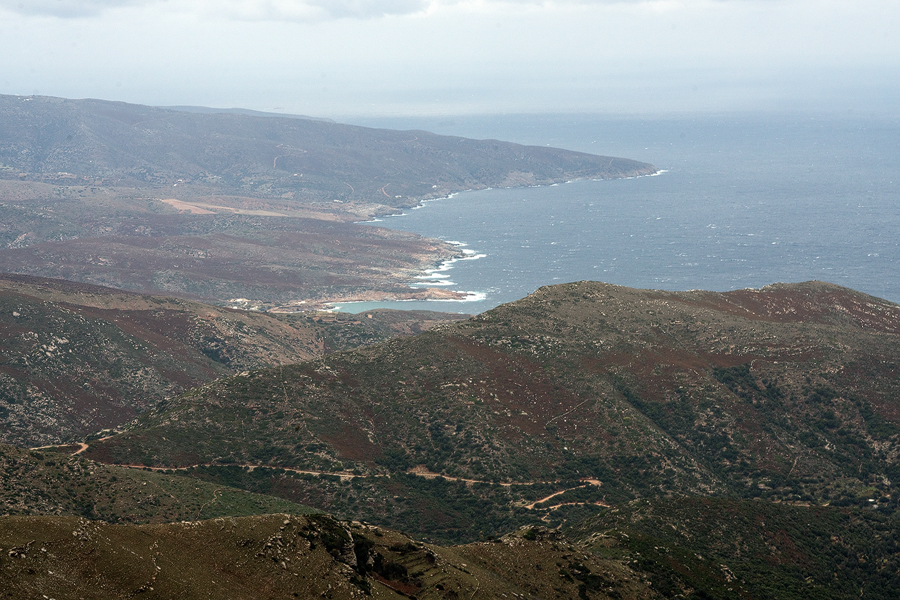
Arriving on a ferry from Athens at the port of Gavrio, on the north-west coast of Andros, my prejudices were not immediately dispelled. Other than a few pencil-thin cypresses and some forlorn palm trees, the vegetation didn’t rise higher than my waist. The place looked windswept and barren, utterly inimical to anything less tolerant of abuse than Broom, which was abundant in the scrub. As I looked more closely, I saw that cheerful yellow Oxalis was flowering in the verges, with magenta Anemone coronaria.
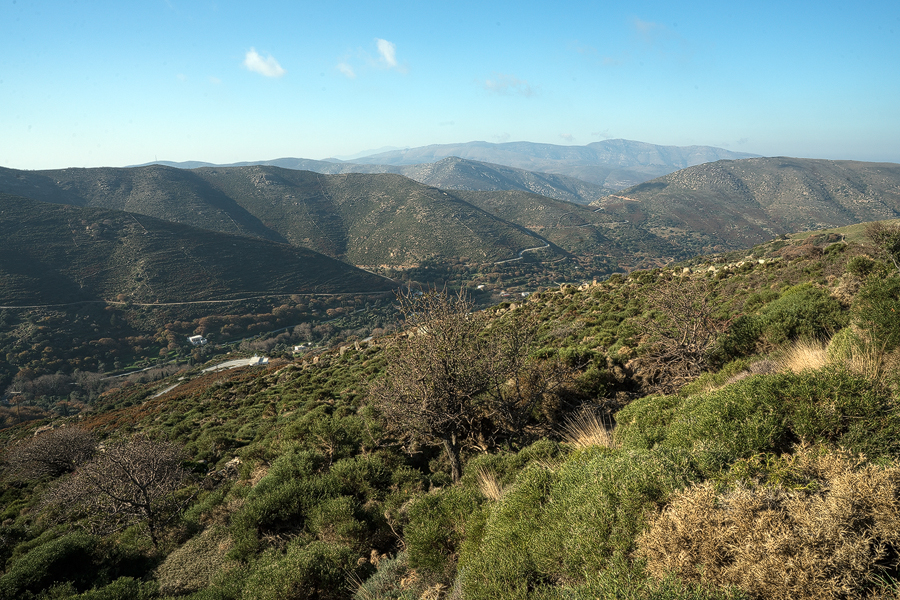
The helpful lady at the car hire shop, conveniently located opposite the jetty, asked what had brought me to Andros at this decidedly off-season date. ‘I’m here to photograph plants,’ I said, ‘snowdrops – do you know them?’ ‘Ah yes,’ she replied helpfully, ‘so you’ll want to head to Arni. I’ll call a friend who will know where to find them.’ And so she called her friend and, within five minutes of getting off the boat, I had detailed instructions on exactly where to go next.
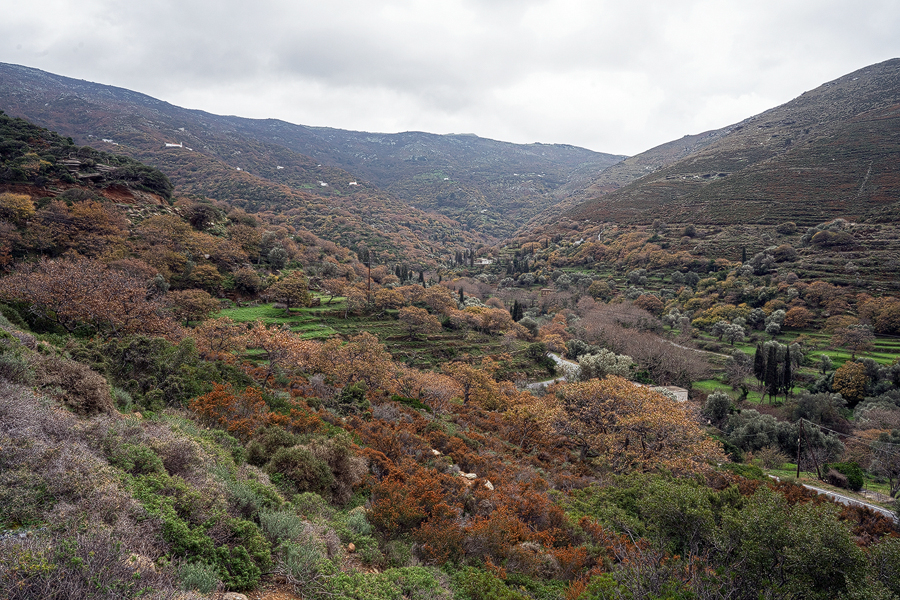
Snowdrop hunting isn’t usually this easy. I drove to Arni, which took about half an hour, stopped at the first likely looking place, where a bridge crossed a narrow stream, and there were the snowdrops – thousands of them, as it turned out – in full flower in the bright sunshine. I spent most of the rest of the day wandering around in this colony, which extended up the stream as far as I had time to explore.

Galanthus ikariae was described from plants collected on the eponymous island of Ikaria. Populations were subsequently discovered on Andros, Syros and Naxos, in the Cyclades island group and may also occur on other islands in the Cyclades. The Greek botanist Kamari concluded that these populations were distinct enough to merit specific status and coined the name G. snogerupii, which differed from its sibling species on Ikaria by virtue of its leaf colour (a paler green) and earlier flowering time – winter rather than spring.
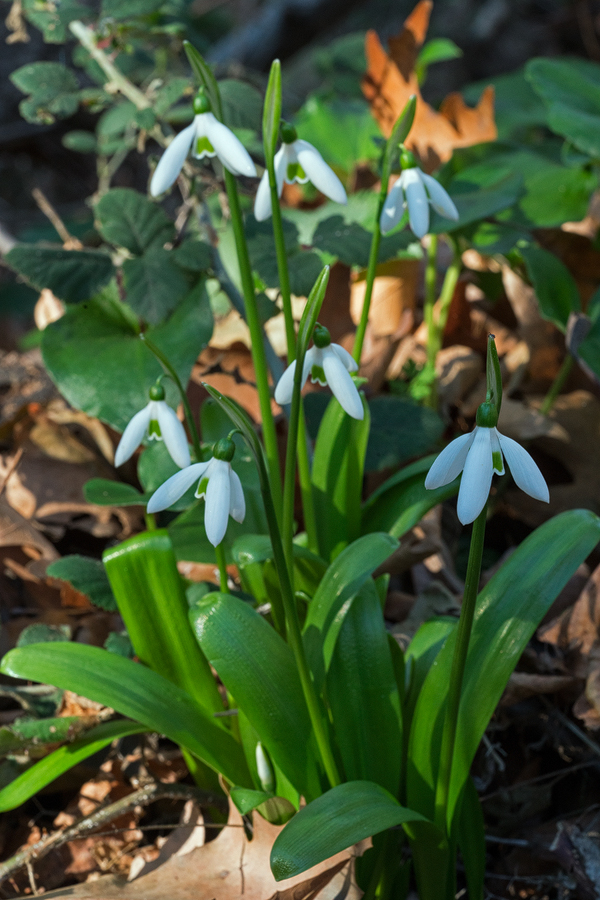
Is ‘snogerupii‘ a valid name? This is one of those irresolvable debates that says more about humans and our psychological need to classify things than it does about snowdrops and their relationships. It would be interesting, from an academic perspective, to know how long ago the populations on each island were founded, which is ancestral and to what extent their genomes have drifted apart but even this knowledge would not tell us whether they represent different species. In lineages of recently diverged, inter-fertile and closely related organisms, biology cannot tell us where one species ends and another starts any more than it could rule where Homo sapiens began and an ancestral species ended, were you to follow your own chain of ancestors back into the distant past. I am agnostic on whether the name ‘snogerupii’ ought to be preserved and will remain so until I have seen the populations on Ikaria, though tentatively, it seems too useful to drop.
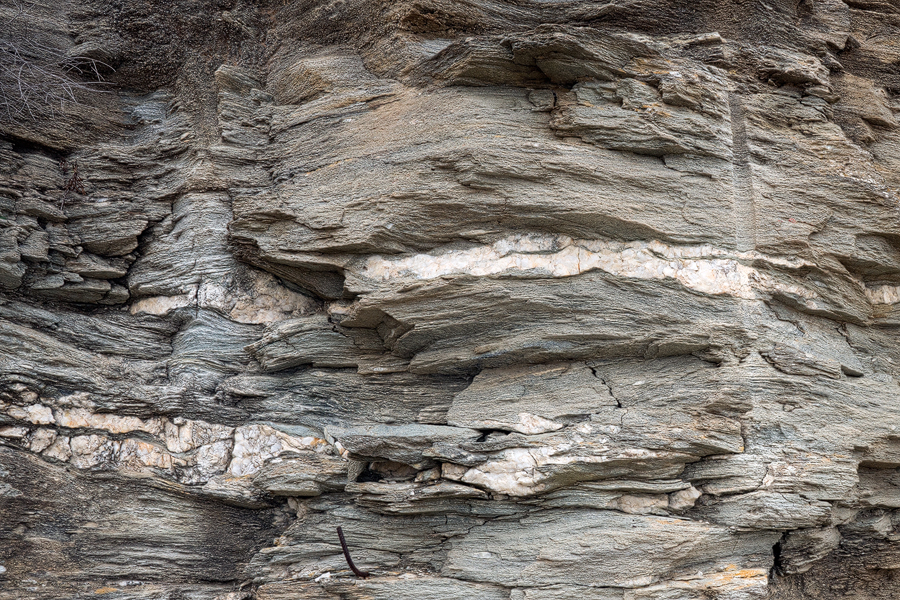
Almost every population of snowdrops I’ve ever seen has been on limestone and I’d come to believe that this mineral was essential to the presence of Galanthus. But the rocks on Andros are schist, of the Cycladic Blueschist Belt, to be precise. Blueschist is a metamorphic rock, formed at very high pressures, but relatively low temperatures, many kilometres below the earth’s surface and then exhumed by geological processes of almost incomprehensible power. These rocks outcrop all over Andros in thin strata, which shatter into large slabs. Houses, the retaining walls of terraces and the boundaries between adjacent fields are built from this stone, which is rather beautiful and ready-made for construction. Because the schist is easily weathered, the mountains on Andros have gentle, rounded outlines. The stony soil derived from this material is sandy but, at least in the valleys, also full of humus, from centuries of accumulated leaf litter.
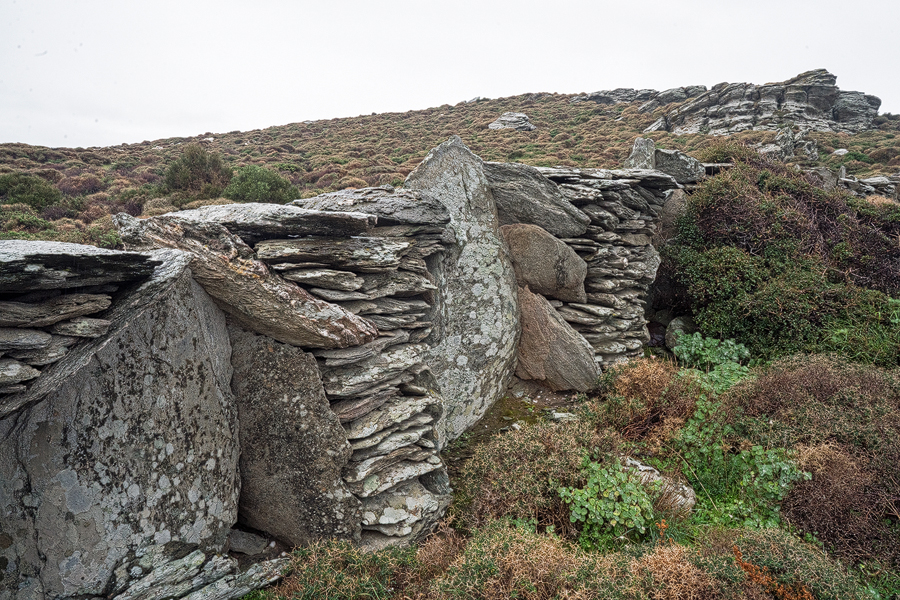
Reading an academic geology paper is like self-flagellation, without the intense sense of gratification when you stop. At least after a good birching one feels purified, whereas reading geology merely sullies one’s mind with impenetrable jargon. After a great deal of effort, I think I have correctly distilled the following précis from the literature. The Mediterranean formed as a result of the plate (large chunk of the earth’s crust) on which Africa sits, pivoting anti-clockwise, about a point near Gibraltar, and drifting in a north-easterly direction. Eventually this process closed the ancient Tethys Ocean and almost sealed the Mediterranean basin. The African plate was subducted, that is, when the plates collided, the African plate slid beneath the plates on which what is now Europe sit, at the Hellenic Trench, which runs NW to SE, south-west of Crete and the Peloponnese. The surface rocks of what had been north Africa were metamorphosed, at depths of up to 30 kilometres. Subsequently, not much more than 30 million years ago, what is now the Aegean opened up as a ‘back-arc basin’, an area where the earth’s crust stretched for a period, exhuming in places the now cooked rocks of what had been North Africa. The result was the Cyclades, islands of metamorphic rock in a limpid, shallow sea.
The village of Arnas (or Arni, depending on whether you consult a map or the road signs and the locals, who use the latter) sits at the head of a valley which faces due north. It must be the most over-churched place on earth, with more than 20 churches or chapels serving a population of which I saw virtually no evidence during my visit. Springs high up in the watershed feed numerous tiny streams, which converge on a small river, the Vori, that flows north into the Aegean at Lefkia Bay, a few miles away.

The valleys were lined with plane trees, completely bare at this season, their brittle fallen leaves forming a litter up to half a metre deep in hollows between the schist boulders. Slightly further away from the stream bed were deciduous oaks and a maple species, Acer monspessulanum, its leaves turning buttery yellow. This is a most attractive small tree, with little, three-lobed leaves. From a distance the habit of the plant and the small leaves call to mind a hawthorn. Flowering with the snowdrops was Cyclamen hederifolium subsp. crassifolium, surprisingly late, perhaps because it had been a very dry autumn. Also present were two aroids, Arum concinnatum and Arisarum vulgare, the latter flowering.
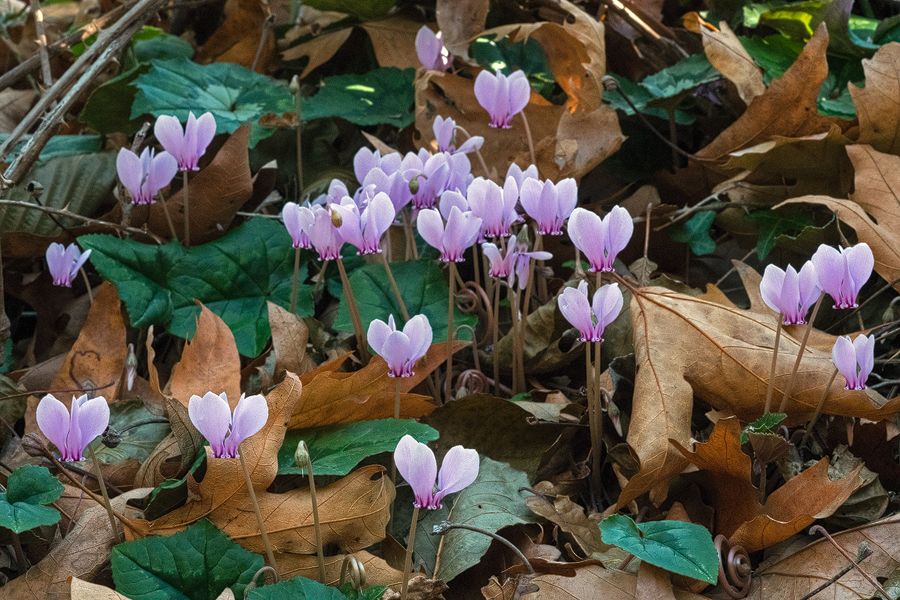
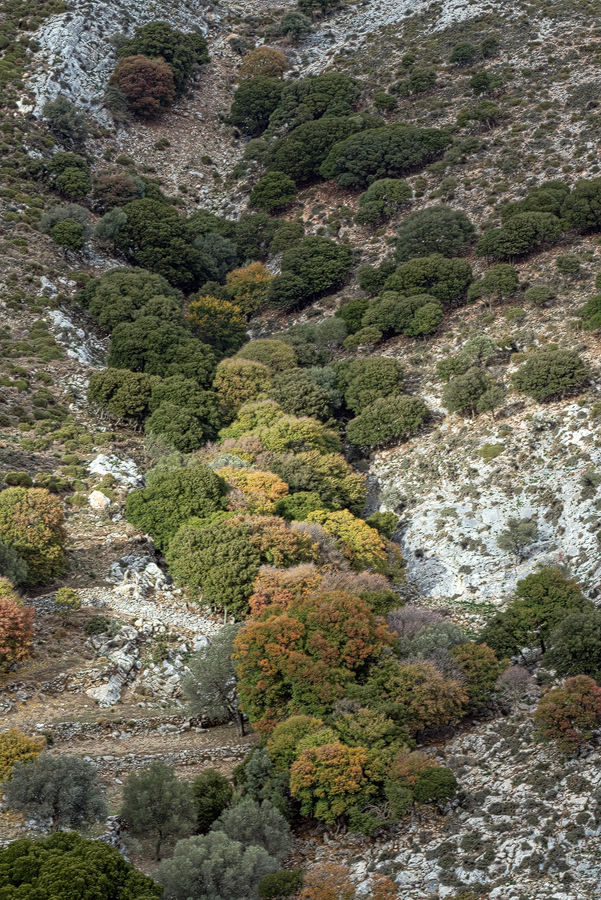
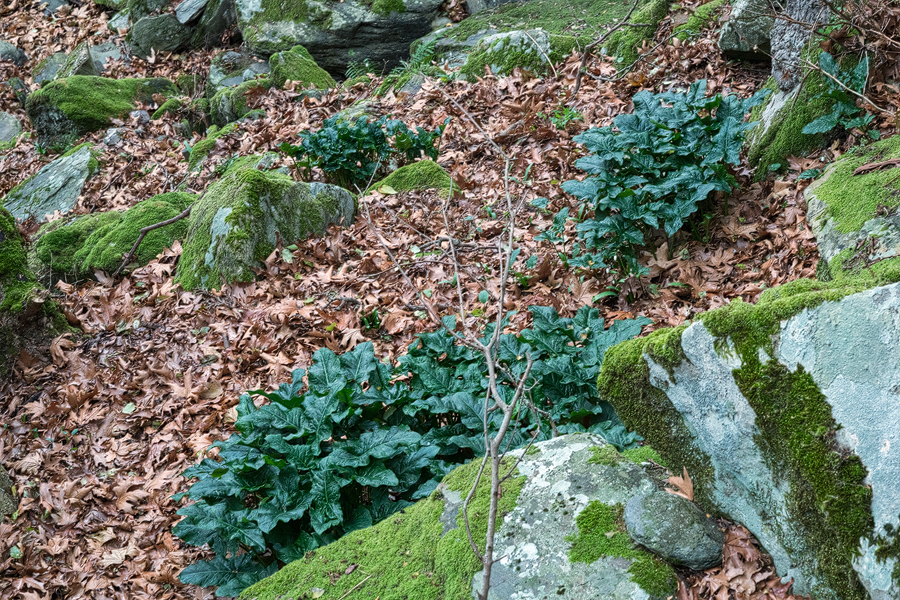
The head of the valley that Arnas straddles faces north and the main stream draining the valley flows from south to north but, as I explored the network of streams over the next few days, it became clear that the snowdrops were more abundant on the slightly sunnier west-facing bank of the main stream and in tributaries of it that flowed from east to west, facing more-or-less west. On that warm, sunny first afternoon the sunlight, shining through the naked canopies of the planes onto the snowdrops, made it challenging to photograph them without over-exposing the flowers or under-exposing the background.
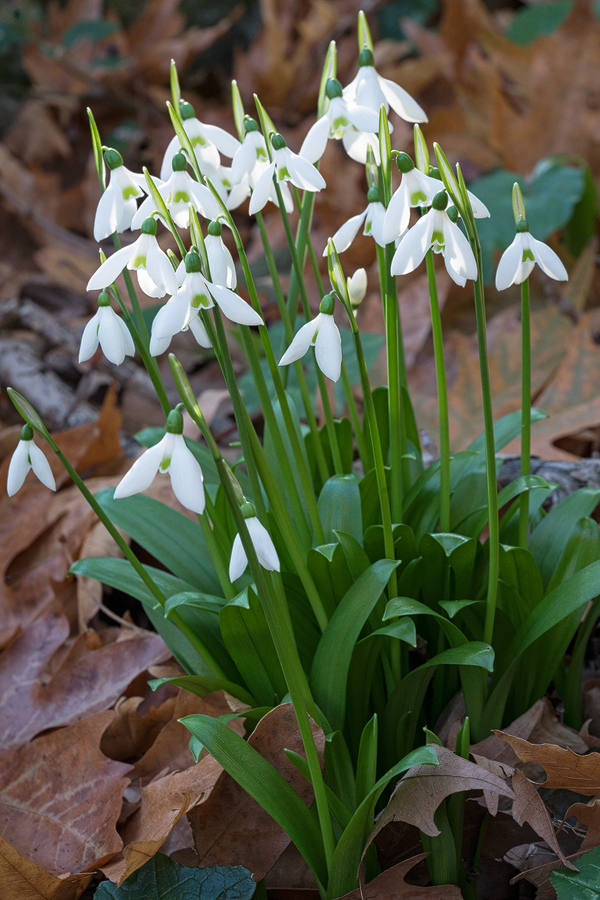
I did not attempt to estimate the number of plants in the extended population but it was, at least, tens of thousands strong.
A few bumblebees were flying from flower to flower, and an intensely strong, delicious fragrance wafted up from the woodland floor. I have a poor sense of smell and frequently cannot detect scent on snowdrops, but these plants were an exception. The bees must have done their work effectively last year because numerous clutches of seedlings were germinating through the leaf litter. The population is regenerating healthily.
The first place at which I stopped was at an elevation of just under 190m and, as it turned out, this was not far from the lower elevational limit of the snowdrops, which continued for perhaps another 500m downstream, becoming increasingly sparse down to about 180m in elevation. In contrast, they became more abundant and thicker on the ground at higher elevations and were commonest at the heads of tributary streams, at up to 540m, above which there was no suitable habitat.
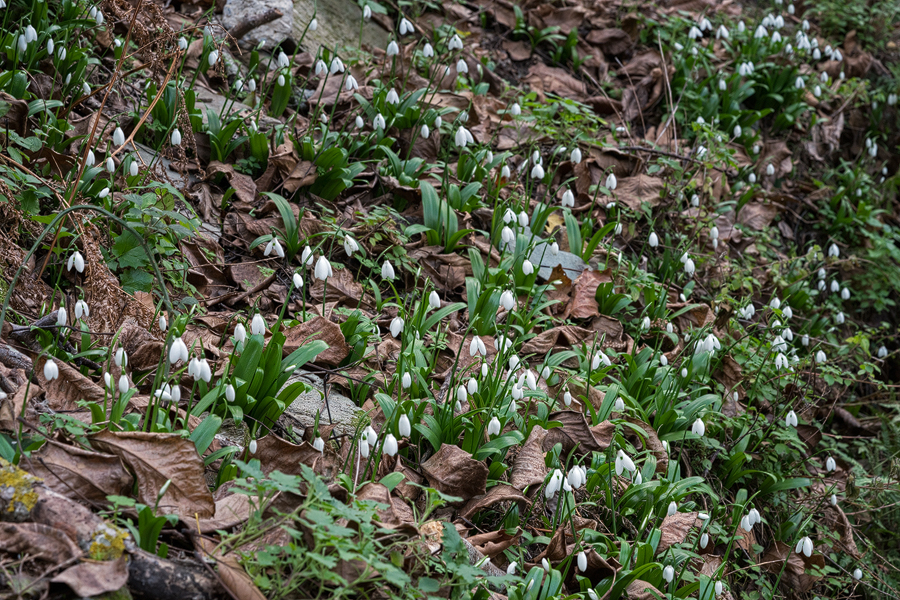
Whereas many of the plants at lower elevations had finished flowering and were beginning to set seed, the colonies higher up were in full flower, with many scapes still in the early stages of emerging. This pattern of later emergence at higher elevations is shared with G. cilicicus but is the opposite of that in G. peshmenii and G. reginae-olgae (and G. transcaucasicus, based on evidence gathered by a friend in Iran). Perhaps the two species that flower in autumn, well before the winter solstice and typically well before any snow falls, are triggered into flowering earlier at higher elevations by lower – but still mild – night temperatures, whereas the winter-into-spring flowering species are delayed at higher elevations by freezing temperatures and, on occasion, snow? Interestingly, the pattern with the autumn-flowering Cyclamen was the reverse of the snowdrops. Only those at lower elevations were still flowering.
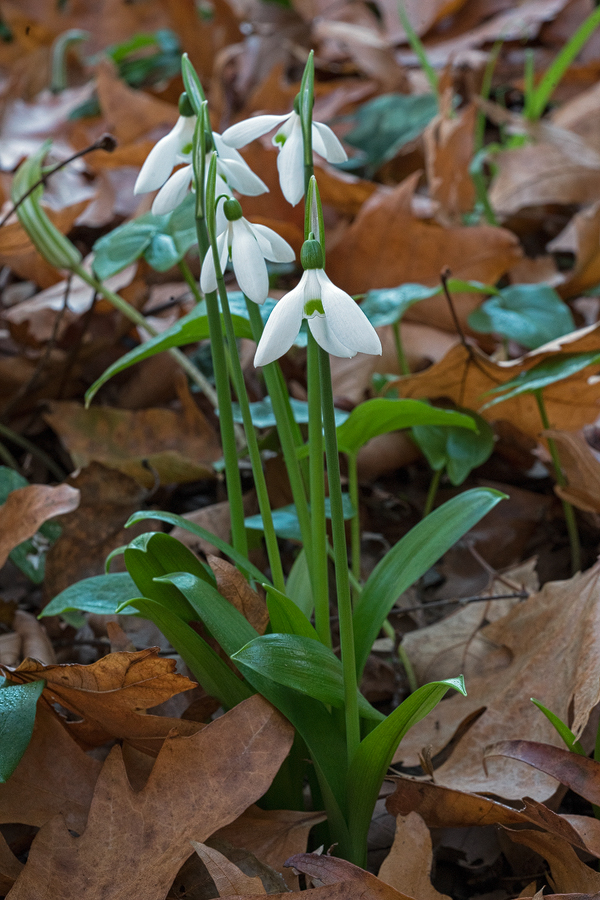
The first thing that struck me about the snowdrops was that, in contrast to all the other species I have so far seen on the snowdropathon, they were all in full leaf and indeed the colony had a ‘leafy’ appearance. The leaves were broad (up to 4cm wide), glossy and lime green. They were obviously supervolute in vernation, with one leaf clasped around the other, and rather floppy, so that the upper surfaces were roughly parallel with the ground, presumably maximising incident light. The adaxial surface of each leaf bore several longitudinal grooves and terminated in an acute, hooded apex.
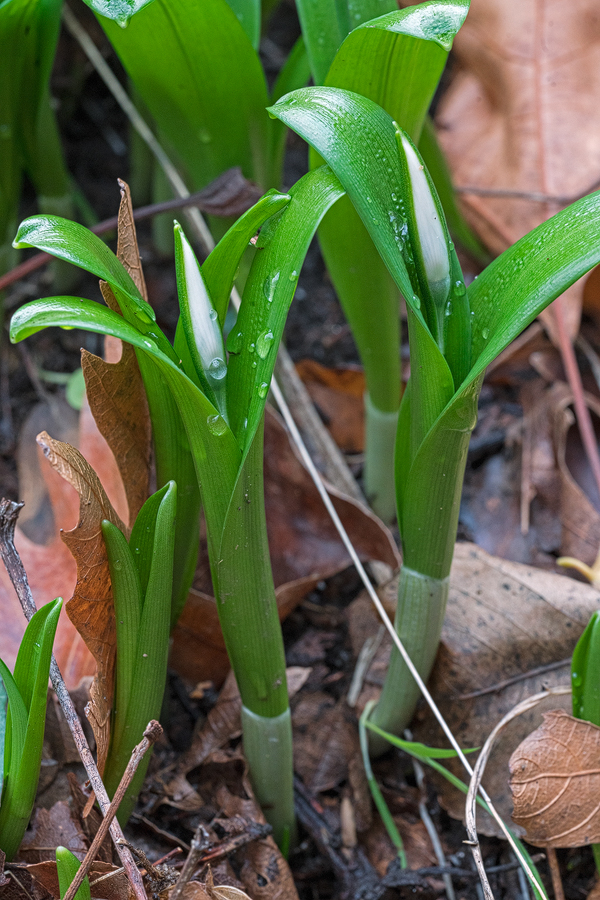
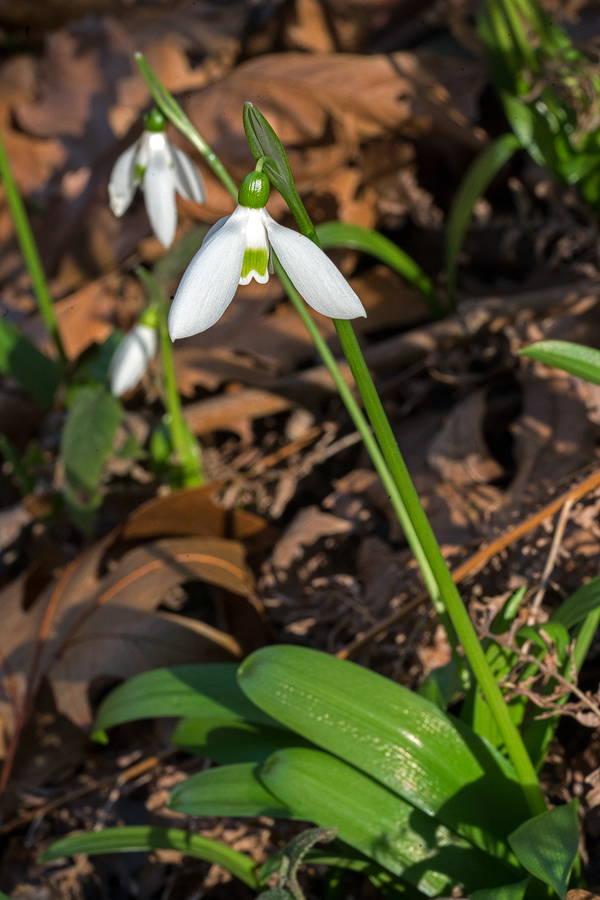
The upper surfaces of the leaves were textured with small pustules, superficial evidence of the large cavities within the leaf that others have reported. I was too absorbed by the plants to remember to slice open a leaf to check whether I could see these lacunae with my naked eyes. In his Galanthus monograph, Aaron Davies speculated that this might be an adaptation to high temperatures but this seems unlikely to me. Temperatures while the plants are in leaf are not particularly high – indeed often they are strikingly cold (see below). Presumably these air spaces within the leaves have a function. Could it have something to do with harvesting and storing water from mist, which is commoner than rainfall in early winter, or is it perhaps related to frequent freezing and thawing?
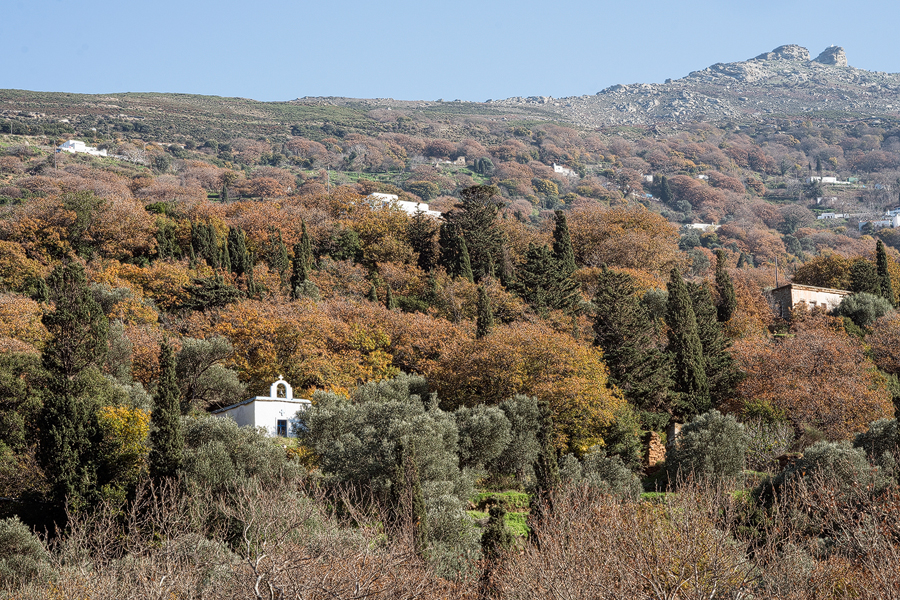
As I walked in the dusk back along a footpath above the river, to my waiting hire car, I was hailed by a farmer, who had been tending his mixed grove of olives and lemons. In flawless, unaccented English he asked me, not aggressively, where on earth I had come from and where I was going. I explained my mission and we started chatting. I swear it was not me who initiated a conversation about the weather. He had lived in London for several years, it turned out, and perhaps he had imbibed the law that makes this subject the only acceptable one between strangers meeting unexpectedly in the woods.
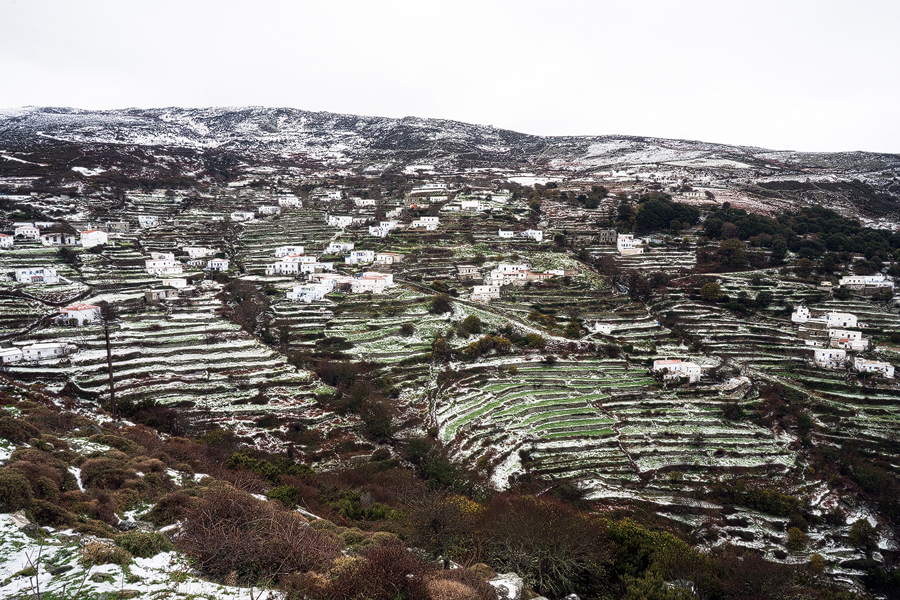
I was lucky with the weather, said the farmer but tomorrow it would turn much colder. It might even snow, he warned me. ‘Snow?’ I asked, ‘surely that’s unusual here?’ ‘Not particularly,’ he replied and went on to tell me that it had snowed for four days in January 2015 and he remembered the winter of 2004, when snow lay 30cm deep on the beaches and drifted to more than a metre in the mountains. But the cooler weather and some moisture was welcome for farmers, as there had been virtually no rain since September.
As it turned out, the farmer’s prediction was accurate. I awoke the following morning to flurries of sleet at sea level and, driving back into the mountains, the valley above Arnas was dusted with snow, which increased in depth over the next two days but only to a maximum of a couple of centimetres. The flowering snowdrops clammed shut; the leaves and scapes flopped limply in the freezing air. I assume that, when warmer weather returned, they will have recovered?
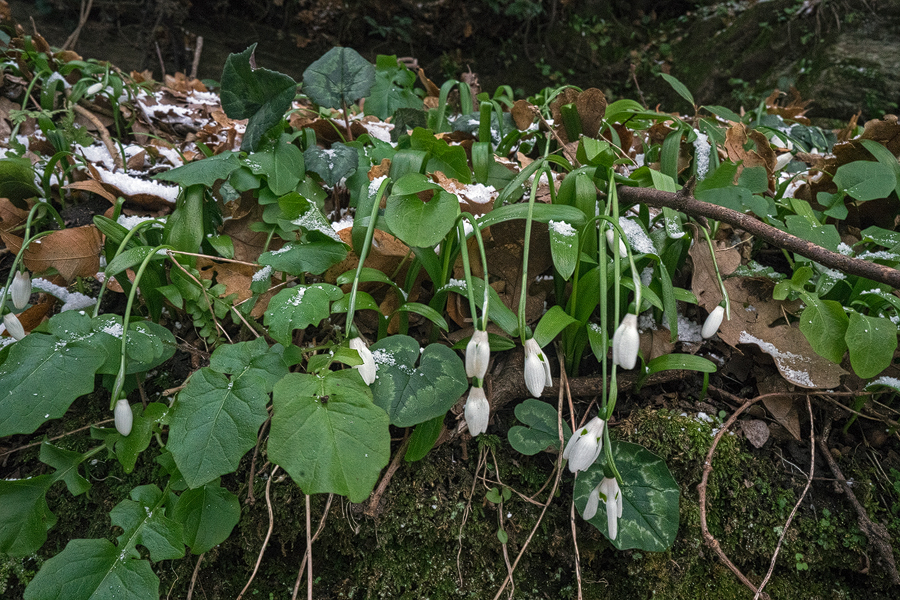
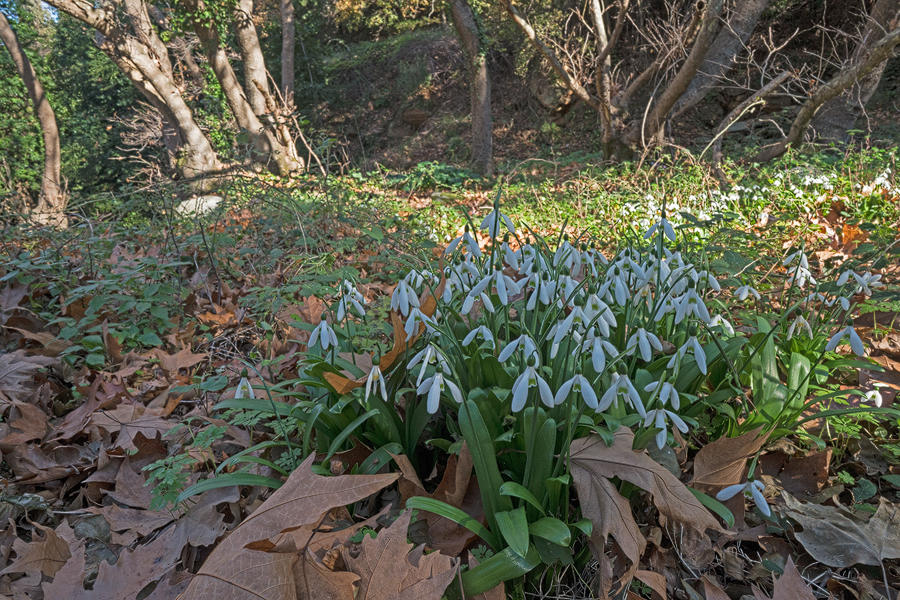
Most clones had built up into clumps, some of considerable size though, with so many seedlings in the thickest parts of the population, it was often difficult to tell where one clump ended and the next started. Many plants in many clumps seemed not to be flowering but, again, it was hard to tell whether the non-flowering bulbs were young offsets or seedlings. Either way the contrast with, for example, the generally non-clumping G. reginae-olgae was striking. This population of G. ikariae clearly propagates vegetatively with great vigour.
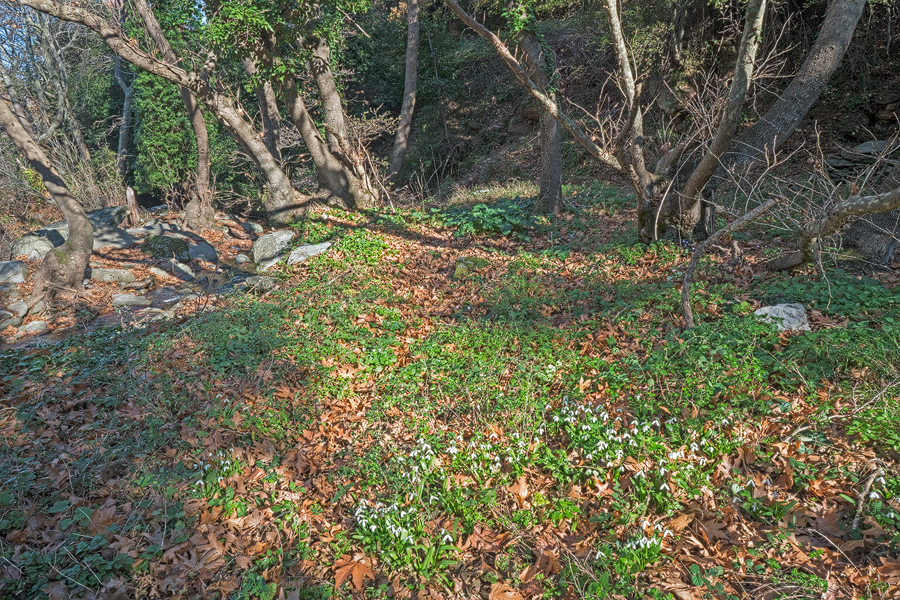
The scapes stood very erect, with spathes (the thin membrane stretched between two slivers of green tissue, which extends from the top of the scape) that extended vertically or in a gentle, arching curve from the tops of the scapes. Different clones varied widely in stature, the tallest being 30cm from the point at which they emerged from the leaf litter but scraping around their bases revealed that they had often pushed their way up through half that depth again of decomposing leaves. The shortest plants were about 10cm tall.
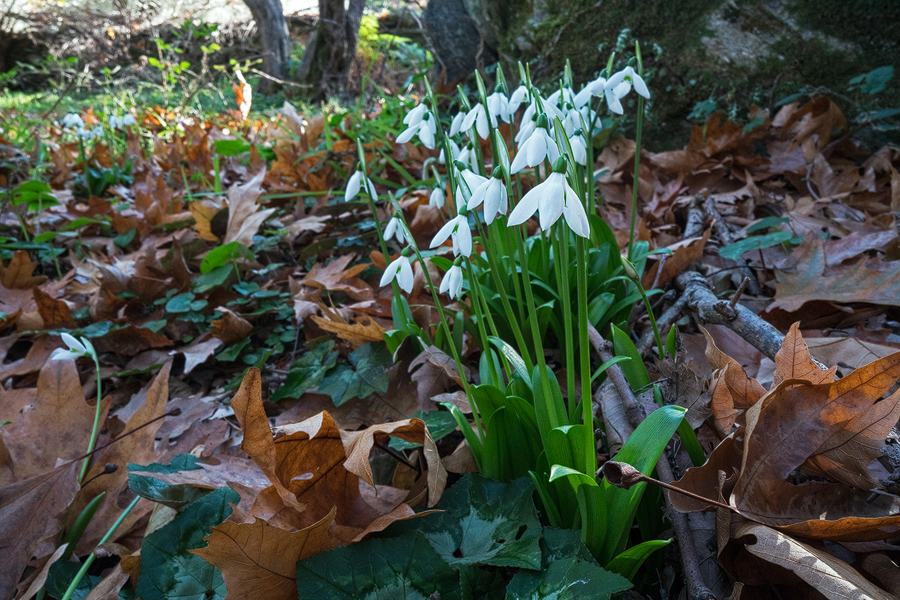
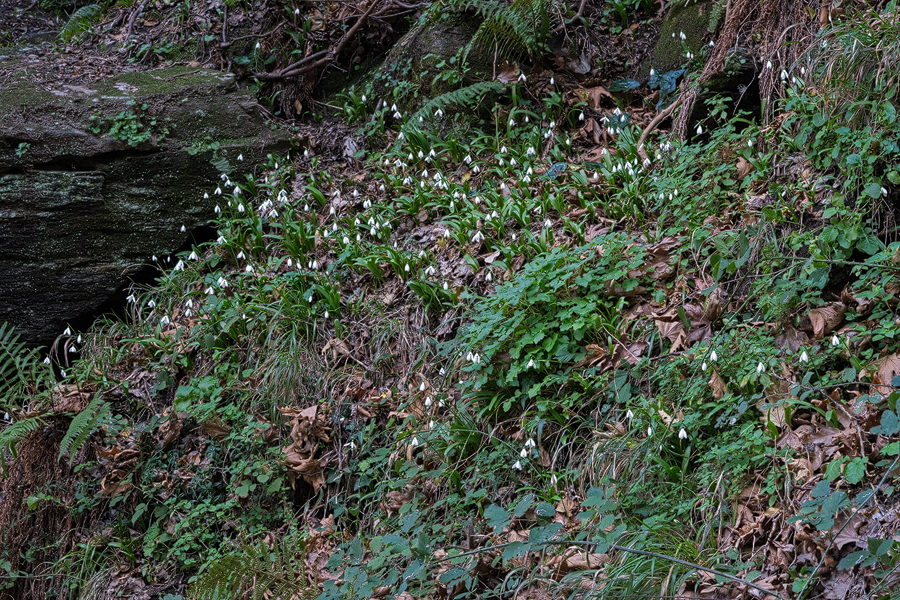
The flowers looked deceptively small, in relation to the leafiness and stature of the plants but were, in fact, rather large, with the largest having outer segments 4cm in length (though this feature was highly variable), bigger than most snowdrops. Most flowers were shapely, with rather long claws and an elegantly tapered ‘shoulder’. The main part of the outer segments were typically bowed, so that the flowers generally had a characteristic ‘chubby’ appearance.

The single, dark green mark at the apex of the inner segments was also distinctive. Typically it covered about a third of the segment and had a more-or-less straight edge at the basal end (i.e. parallel to the segment’s apex). The sinus was usually prominent, with the green mark extending on either side of it, so that the shape of the mark often reminded me of a molar tooth.
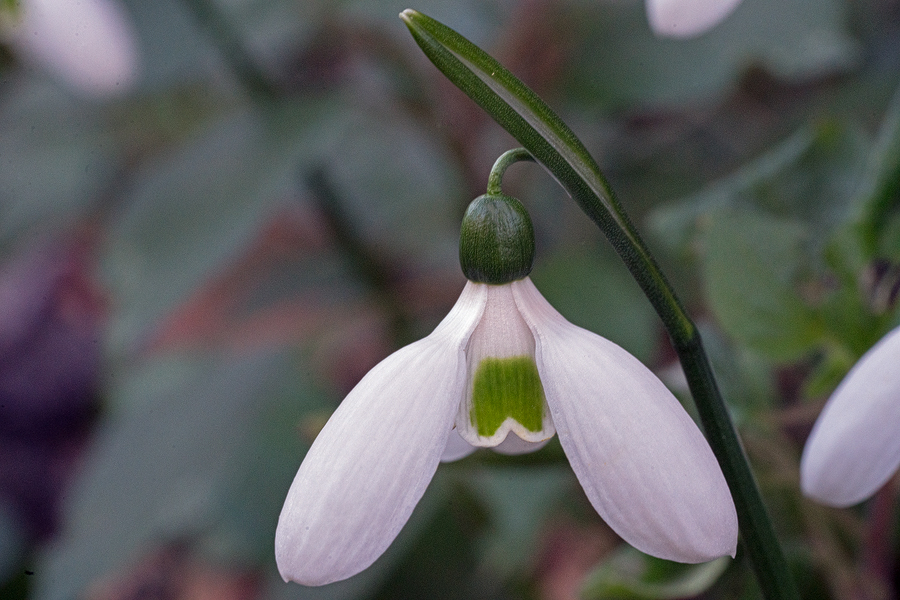
The dark green receptacle (often referred to, technically incorrectly, as the ‘ovary’, which is obviously an internal structure) was often almost spherical, pea-like and conspicuously constricted at the junction with the flower.
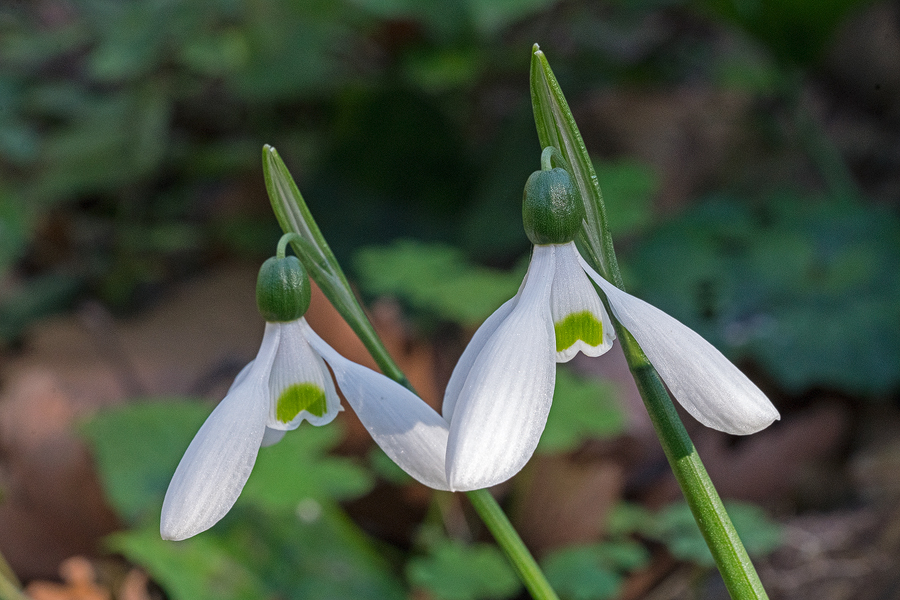
As an unashamed lover of diversity, I am always on the lookout for oddities, freaks and deviants (and not just in snowdrops). It seemed to me that this population of G. ikariae was somewhat less variable than other snowdrop populations with which I am familiar, at least in the features that attract a galanthophile’s attention. Of course, the variation that is salient to natural selection is not necessarily the same thing at all and, in a large population reproducing so prolifically by seed, I expect that genetic variation was high.
A handful of plants had all-green (‘virescent’) inner segments and I found these particularly attractive. A miniscule proportion of plants also had green smudges towards the tips of the outer segments. Mutations of these kinds occur at varying frequencies in virtually every snowdrop population I have ever studied. Commoner, but still rare, were plants in which one or more of the inner segments had mutated into a cross between an inner and an outer, or in which some of the anthers had fused with the inner segment. Search as I might, however, I did not see any perfect ‘poculiform’ plants (jargon for plants in which the whorl of inner segments has been entirely replaced with outer segments). Each of these mutant-types tended to occur in clumps, with several distinct but similar seedlings often occurring within a few square metres.
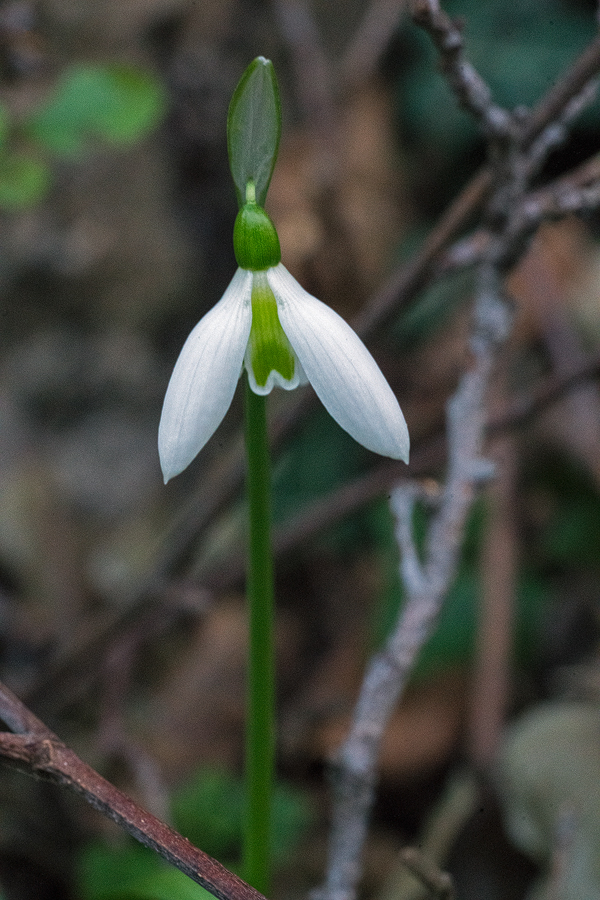
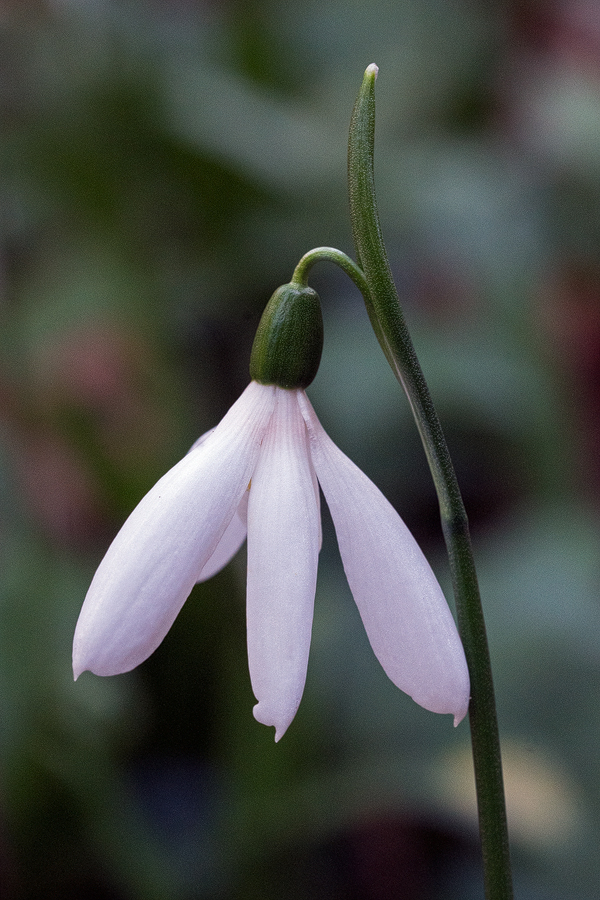
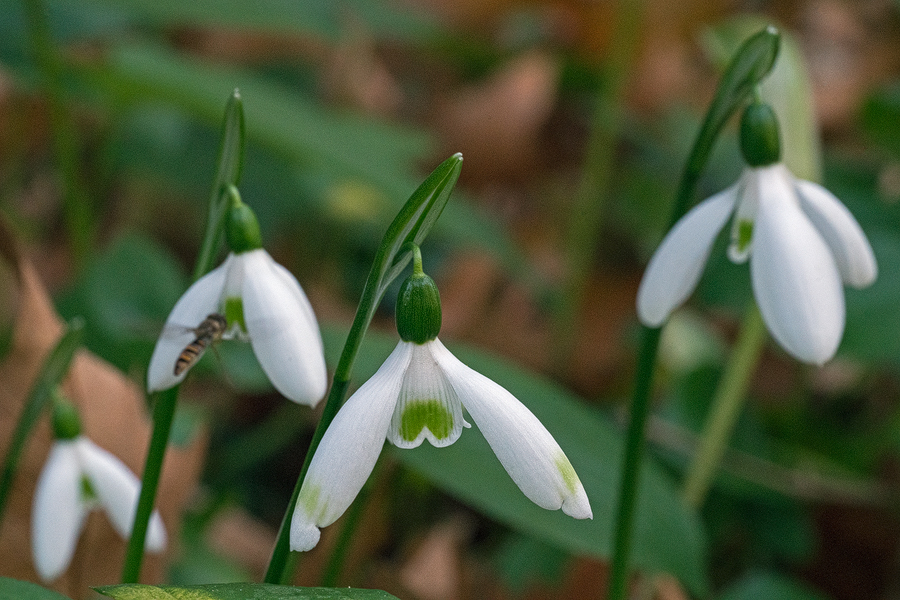
After four days on Andros over new year, I moved on to Naxos, 90 kilometres south. Naxos is the largest island in the Cyclades and, although its highest peak, Mount Zas, is only a few metres higher than Andros’s, it feels more mountainous, with more, higher peaks and a more rugged terrain, the result of the weathering of its hard marbles and schists. Dare I say, Naxos has a more varied and more beautiful landscape than Andros. Arriving early in the afternoon, by ferry from Athens, it was clear that much more snow had fallen on Naxos than on Andros. Although the weather had warmed up considerably, there were still piles of snow nearly a metre deep beside the roads above about 500m elevation. According to local news, snow had lain 60cm deep in some villages.
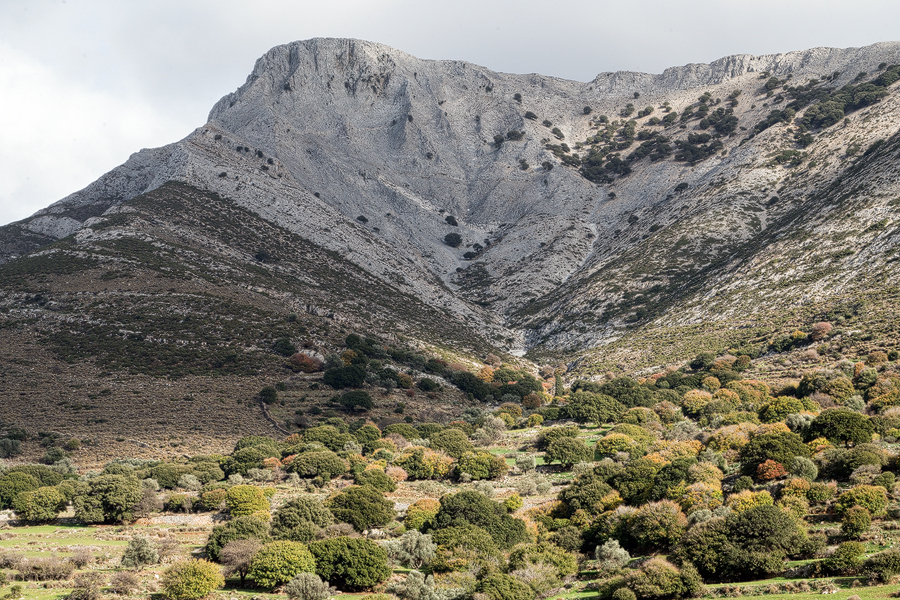
The geology of Naxos is quite different to that of Andros, giving the island a completely different feel. Although formed by the same processes (subduction of surface or submarine rocks, followed by metamorphosis, followed by exhumation), the surface geology on Naxos today is more complex than that on Andros. The west of the island is granodiorite, an igneous rock similar to granite, formed after the recrystallisation of melted rocks. Most of the rest of the island is composed of marble, interlayered with schist. The marble is exceedingly beautiful and has been used since antiquity in sculptures and buildings. The stonemasons of the island are renowned for their skill.
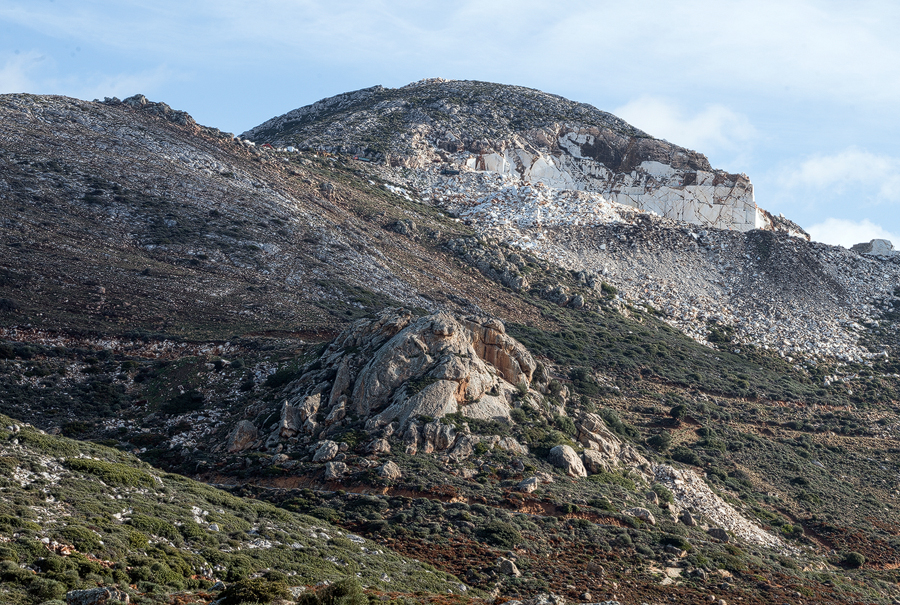
I love poring over old-fashioned paper maps, preferably with a glass of wine to hand, and trying to figure out where the best places to botanise might be. The result is usually a map heavily annotated with numerous circular red stains. I had concluded that the valley around the village of Koronidha, on the NE slopes of Mount Koronos, would be a good place to start my search for Galanthus ikariae on Naxos. Had I arrived two days earlier, the roads would have been impassable but most of the snow had melted and, not long after stepping off the boat, I found myself clambering over boulders in a steep-sided river valley, with plane trees, oaks and Acer monspessulanum, similar to the valleys on Andros.
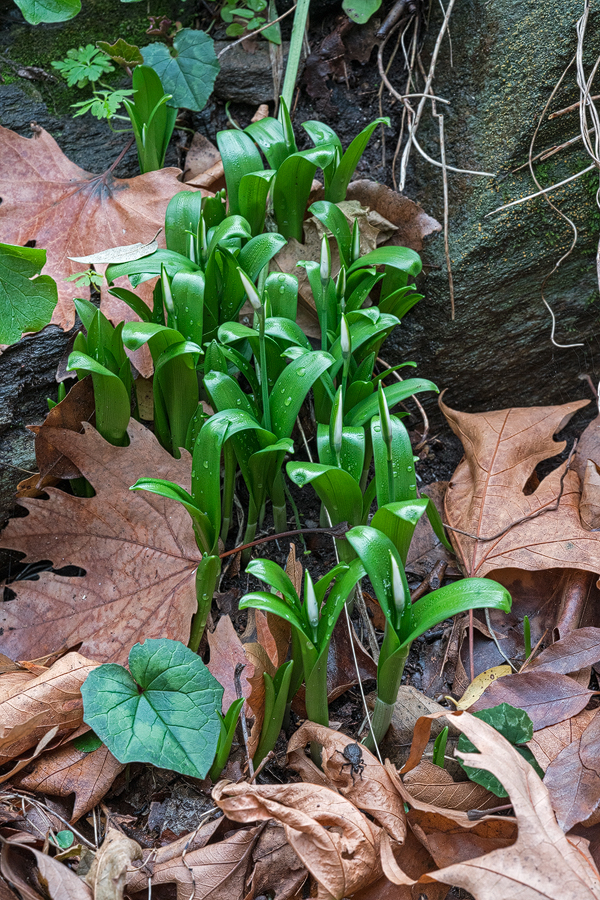
At an elevation of 460m, on the north-facing bank of a small river running west-east, I found Galanthus ikariae just emerging, none of the plants yet in flower, but with leaves already well-developed. The air temperature was well above freezing and the leaves and emerging scapes were turgid (flowering plants on Andros had flopped, when hit by freezing air – see photograph above). At the same elevation on Andros, in very similar habitat, the snowdrops were at least three weeks ahead of this. At some plausible higher elevation places I’d stopped at, there was no sign yet of snowdrops, though I suspect that they will emerge later in spring. I did not have time to determine the lower elevational limit of the snowdrops in this population, but they did not seem to be present where a road crossed the river at just over 200m above sea level.
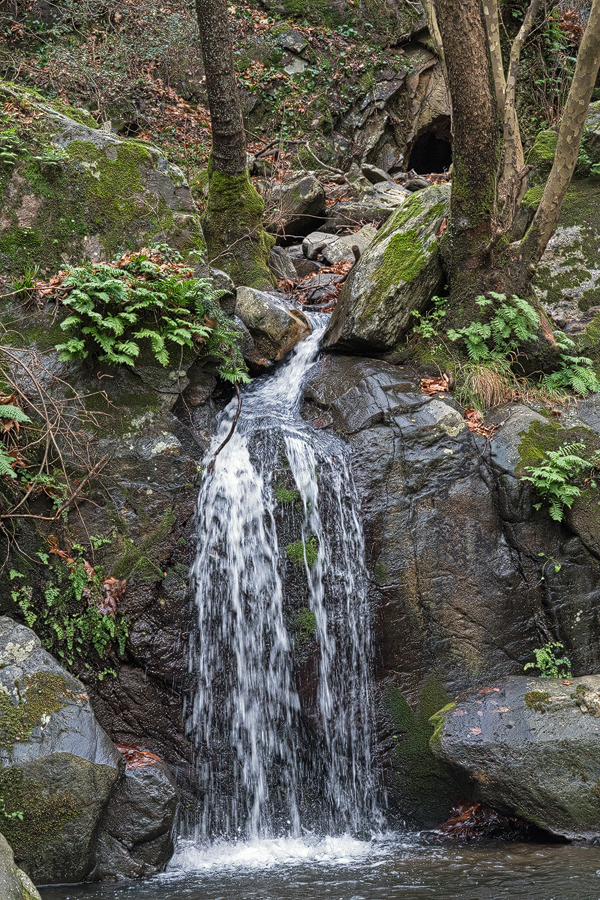
The following day, after a spectacular overnight thunderstorm, virtually all traces of snow had disappeared and I explored as much of Naxos as I could. I’d have loved to have had another week, to drive all the minor roads and walk up the valleys inaccessible by car. I did find one other Galanthus population, on the eastern side of Naxos’s highest mountain, Mount Zas. At an elevation of 430m, lower than the first colony I’d found, the snowdrops were barely above ground. Interestingly enough, they were growing in crevices between marble slabs, under a canopy of Acer monspessulanum and evergreen oak. There were no plane trees growing in this valley, so far as I could tell. Evidently G. ikariae does not grow solely on schist, as I had begun to suspect was the case.
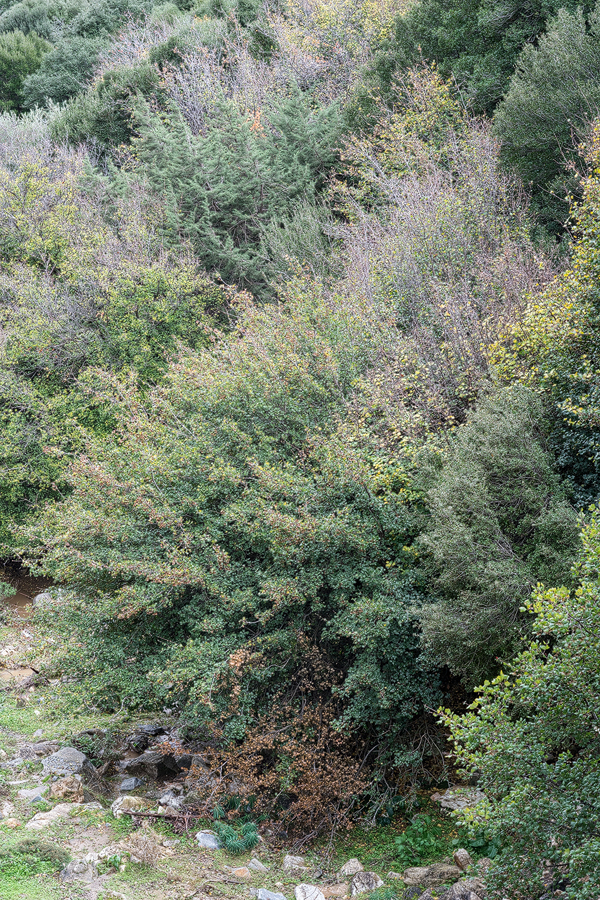
Quite why the snowdrops on Naxos are flowering later than those on Andros is a bit of a mystery to me. Perhaps the climate is slightly colder, on average, in winter. According to the chatty and informative taxi driver who took me out to Naxos airport, there is snow every year on Mount Zas, the highest peak in the Cyclades and it is not uncommon for the inland villages to be cut off for days at a time. Alternatively, or as well, perhaps it gets hotter in summer? Whereas on Andros, the snowdrops that I saw were most abundant on west-facing banks, those on Naxos were definitely confined to the shadiest, coolest, north-facing sites. I’m most frustrated that I can’t make it to Syros on this trip. I know that there is a large population of snowdrops on that island, which is nowhere higher than 450m, so I speculate that they are flowering now. Another time!
